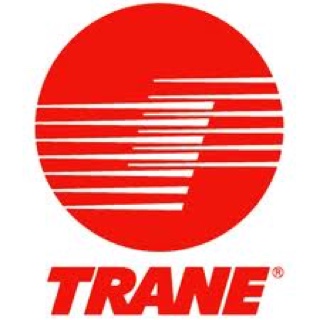Information
-
Safety Inspection Report
-
Client / Site
-
Conducted on
-
Prepared by
-
Location
-
Personnel
0. General Site Information
-
Total personnel on site:
-
Weather Conditions
-
Are the required postings visible and current?
-
What are the PPE requirements per company policy: Which types of PPE are mandatory at all times, if any? Which types of PPE are task specific, if any?
-
Are emergency eyewash stations present?<br><br>• §5162. Emergency Eyewash and Shower Equipment.
-
If it is a portable system, is it expired?
-
If it is a plumbed system, has it been activated in the last 30 days to flush the line and to verify proper operation?
-
Is there at least 15 minutes worth (or 3+ bottles) of potable water flushing?<br><br>• ANSI Z358.1-2009 - [Standard for Emergency Eyewashes and Shower Equipment]: Plumbed and Self-Contained Eyewash Equipment (Section 5): Performance and Maintenance Criteria: Minimum flushing fluid of 0.4GPM at 30 PSI for 15 minutes (Section 5.1.6)
-
Is there an adequate First Aid Kit on site?<br>• T8 CCR 3400
-
Are there First Aid/CPR Qualified persons on site? <br>• T8 CCR 1512
-
Is there adequate training documentation present (forklift operator, boom lift operator, scissor lift operator, scaffold competent person, etc)?
-
Are certifications issued/used (hot work permits, etc)?
1. Working at Heights
-
1.1. Fall risks of 7.5 feet or more? (including voids, pits, and trenches)<br>• T8 CCR §1670
-
1.11 Are there fall risks of 6 feet or more? <br>• OSHA 1926.501(b)(2)(ii)
-
1.2. Lack of edge protection?
-
1.3. Unsafe or incomplete edge protection?
3. Scaffolds
-
3.1. Competent persons erecting or moving the scaffold system<br><br>• A Cal/OSHA permit is required for erecting and dismantling scaffolds that exceed three stories or 36 ft. in height. T8 CCR 341(d)(5)(B)
-
3.2. Unsafe or incomplete scaffold?
-
3.3. Is there sufficient access/egress to/from all platforms of scaffold system?<br><br>• A safe and unobstructed means of access, such as a walkway, stair, or ladder shall be provided to all scaffold platforms. T8 CCR 1637(n)(1)
-
3.4. Lack of inspection protocol for scaffold?
-
3.5. Incompatible scaffold components? Unlabelled or do not meet the applicable ANSI/ASSE A10.8 standard?<br><br>• Manufactured planks shall be able to support their weight plus 4 times the live load. T8 CCR 1637(f)(3)(A)
-
3.6. Safe Work Load (SWL) exceeded? (tools, stored materials, number of persons)<br><br>• Each scaffold must be designed to support its own weight and 4 times the maximum load. See T8 CCR 1637(b) for maximum working loads.
-
3.7. Are toeboards (or an equivalent form of protection) installed where applicable?<br><br>• Workers on scaffolds who are exposed to overhead hazards shall be provided with overhead protection or other means that will effectively eliminate the hazard. T8 CCR 1637(q)<br>• Toeboards are required on all railed sides of work surfaces where employees work or pass below. T8 CCR 1621(b)
-
3.8. Is the weather appropriate for scaffold work?<br><br>• No work shall be done on or from scaffolds during storms or high winds (see exceptions). T8 CCR 1637(u)
-
3.9 Are scaffolds adequately anchored?<br><br><br>• Anchorage and bracing shall be such that scaffolds and falsework will be prevented from swaying, tipping, or collapsing. T8 CCR 1637(c)
5. Harness and Equipment
-
5.1. Unsafe or damaged harness or equipment?
-
5.2. Incompatible hooks/equipment?
-
5.3. Unlabelled or does not meet ASSE/ANSI?
-
5.4. Unsafe or uncertified anchor points?
-
5.5. Lack of inspection protocol for equipment?
-
5.6. Lack of or inadequate formal training for operators?
6. Ladders: In California, Portable Ladder Safety is regulated by Title 8 California Code of Regulations (T8CCR) Section 1675, 3276, 3287, and 3413. American National Standard Institute (ANSI) standards A14.1-2007, A14.2-2007, A14.5-2007 and A14.10 are mentioned in 3276.
-
6.1. Unsafe or damaged ladders?
-
6.2. Unsafe positioning of ladders?
-
6.3. Ladder not properly secured?
-
6.4. Ladder unsuitable for job? (e.g. metal ladder used for electrical work)
7. Hole Protection: §1632. Floor, Roof, and Wall Openings to Be Guarded.
-
7.3. Covers shall be secured in place to prevent accidental removal or displacement, and shall bear a pressure sensitized, painted, or stenciled sign with legible letters not less than one inch high, stating: “Opening--Do Not Remove.”
-
7.1. Are all holes adequately covered?
-
7.2. Are hole coverings able to support 400 pounds?
8. Hazardous Chemical (including fuel and oil)
-
8.1. Unsafe storage location? (e.g. flammables near ignition sources, spills could enter stormwater drains, etc)
-
8.2. Are Safety Data Sheets accessible on site?<br><br>§5194. Hazard Communication
-
8.3. Lack of emergency procedures for injury/spills/fire etc?
-
8.4. Excessive quantities stored on site or in vehicles?
-
8.5. Insufficient ventilation?
-
8.6. Insufficient, or incorrect, PPE?
-
8.7. Unsuitable storage containers? (unlabeled or stored in food containers)
9. Emergency Response
-
9.1. Lack of, or no emergency plans for site?
-
9.2. Emergency procedures not displayed at site?
-
9.3. Lack of training and rehearsal of emergency plans?
10. Traffic Management
-
10.1. Lack of, or inadequate, Traffic Management Plan (TMP) in place?
-
10.2. Lack of training in TMP for all persons on site? <br>(contractors and visitors)
-
10.3. Inadequate controls for TMP? (physical barriers, bollards, speed limits, flashing lights, spotters, etc)
11. Personal Protective Equipment (PPE)
-
11.1. Lack of, or inadequate PPE (including sun protection)
-
11.2. Lack of employee adherence to company policy in regards to donning PPE?
-
11.3. Lack of training in safe use, clean-up and inspection of PPE?
12. Work Environment
-
12.1. Lack of/or inadequate amenities? (toilets, wash areas, lunch rooms, etc)
-
12.2. Insufficient lighting?
-
12.3. Inadequate housekeeping?
-
12.4. Lack of, or inadequate noise/ vibration control?
13. Electrical Hazards T8 CCR (CSOs) §1760; T8 CCR (ESOs) Group 1. Low-Voltage Electrical Safety Orders (Sections 2299 - 2599)
-
13.1. Unsafe electrical leads? (damaged, out of test date or untested)
-
13.2. Lack of GFCI protection?
-
13.3. Contact with underground assets?
-
13.4. Contact with overhead electrical lines?
-
13.5. Overloading outlets?
-
13.6. Leads placed on ground or on metal structures?
-
13.7. Electrical equipment near water?
-
13.8. Electrical equipment near flammables?
-
13.9. Electrical equipment near chemicals that could cause damage?
-
13.10. Electrical leads that may be damaged from contact with moving machinery parts?
-
13.11. Electrical leads on work surfaces?
-
13.12. Lack of Lock-out/tag-out (LOTO) procedures for electrical equipment?
-
13.14. Use of household extension cords instead of required industrial grade cords?
14. Environmental Hazards
-
14.1. Lack of/or inadequate Environmental Management plan (EMP)?
-
14.2. Lack of/or inadequate, dust suppression system?
-
14.3. Lack of/or inadequate systems to prevent contaminants entering stormwater drains?
Corrective Actions
-
Enter any corrective actions that will be undertaken
Sign Off
-
On site representative
-
Auditor's signature










